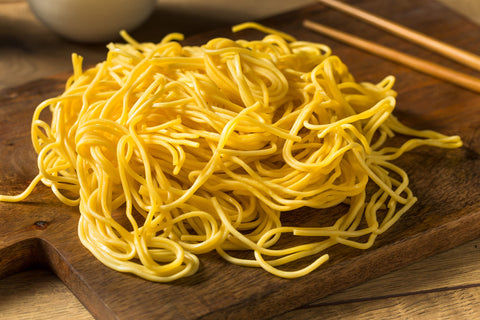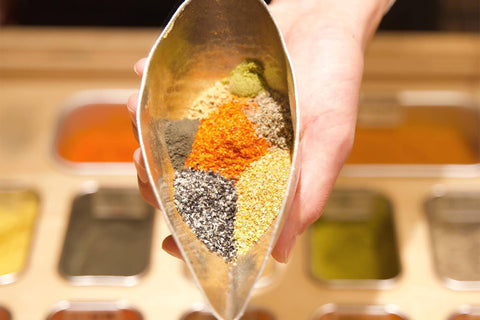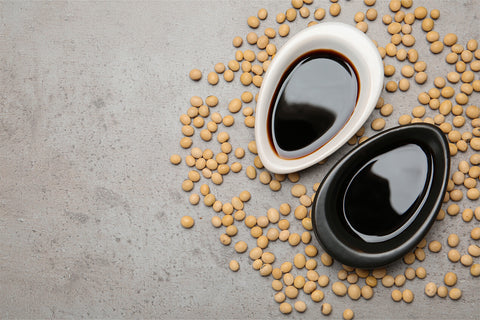
Like many East Asian countries, Japan includes noodles in many of its dishes. Simple to make from scratch, and readily-available in dried form at shops and supermarkets, Japanese noodles are a staple ingredient in the country’s cuisine. They are included in soups and other hot dishes and also served chilled alongside a range of dipping sauces.
Types of Japanese Noodles
There are many varieties of Japanese noodles available to buy. Each has their own look and texture and are used in specific dishes. These are some of the most popular ones:
Ramen Noodles
Ramen Noodles (also known as Chuka Soba) are thin noodles made from wheat flour, salt, and a mixture of pure water and kansui (which is a type of alkaline water. The dough is allowed to rise before being rolled, and cut. The resulting noodles are normally pale yellow in colour and have a firm texture. They can be found in a variety of shapes and sizes, depending on the brand you favour. Ramen noodles are traditionally served in a flavoured broth.
Shirataki Noodles
Shirataki are a type of clear noodle made from konnyaku (the konjac plant, also known as the devil’s tongue or elephant yam). This produces a chewy, rubbery type of noodle that is often incorporated into dishes like oden and sukiyaki to add texture.
Soba Noodles
Soba noodles are made from a combination of wheat flour and buckwheat flour. While they can be served hot in a broth or soup, they are also popular served cold with a dipping sauce alongside. Sometimes soba noodles are served chilled (known as zaru soba), tempura is often served on top of soba for a winter warmer.
Somen Noodles
Somen noodles are another wheat-based noodle, though this variety is very thin and white. Like soba noodles, these are often served in the summertime as a chilled dish with an accompanying dipping sauce, but can also be used in soups, broths, and other hot dishes.
Hiyamugi Noodles
Hiyamugi are similar to udon and somen noodles, and fall between the two in terms of size. Again, they are a popular addition to hot dishes and soups, but can also be served cold or chilled with a suitable dipping sauce.
Udon Noodles
Udon are what many in the West consider the typical Japanese noodle. They are wheat-based and much thicker than most other varieties, being around half a centimetre thick.
Harusame Noodles
Harusame glass noodles that are made from potato starch – either regular or sweet potatoes. Some versions of harusame use rice or mung bean starch instead. Whichever variety you purchase, because they contain no wheat flour, they are suitable for gluten-free diets. These thin, translucent noodles are used in a wide variety of hot dishes.
Making Japanese Noodles
Like most noodle varieties, Japanese noodles are a simple mix of flour and water, kneaded to the right consistency before stretching and cutting to the preferred length. Whilst they are easy enough to make at home or in a restaurant kitchen, many cooks prefer the ease and convenience of buying pre-made noodles.
Buying Japanese Noodles
Japanese noodles tend to comes packaged either fresh or dried, and either can be used for most dishes. Dried noodles are often packaged plain, to be steeped in boiling water for a few minutes, or broken up and stirred into soup.
Certain noodle brands – particularly forms of ramen noodles – are often packaged with sachets of flavouring or dried vegetables, allowing the consumer to create a simple, hot, and nourishing soup in a matter of minutes. These store-bought noodles often form the basis of a more substantial or adventurous dish by added fresh vegetables, meat, or tofu.
Serving Japanese Noodles
Like many Japanese dishes, there is an entire range of tableware specifically designed for eating noodles in various ways, whether as a noodle soup, or a cold dipping platter. These are some of the common pieces of noodle tableware and utensils you might expect to find in a well-stocked Japanese home or restaurant.
Noodle Bowls
These small round bowls are designed for serving individual helpings of hot noodle soup dishes. They can be held in one hand, with the thick ceramic protecting you from the heat. This allows you to bring the bowl close to your mouth while eating.
Noodle Plates
For dry noodle dishes, such as yakisoba and other stir fried noodle recipes, these long, flat plates are preferable. The noodles can be layered as a base for the dish, with meat, vegetables, and other toppings added.
Noodle Trays
Noodle trays are normally made from bamboo and are designed for serving cold noodles – typically soba or udon noodles – alongside a dipping sauce and various garnishes.
Chopsticks & Ramen Spoons
Essential for any noodle dish, chopsticks are the preferred way to tackle all the noodle varieties on this page without making a mess while, for noodle soup, renge spoons allow you to get all that delicious broth from the bottom of the bowl.Popular Products
These are just some of the Japanese noodle products and variations that prove particularly popular at SushiSushi.
Aoi Dried Soba Noodles
Soba noodles different from their alternatives because their chief ingredient is buckwheat. This gives them a unique flavour and distinctive brown colour, as well as making them the healthiest variety of Japanese noodles. These Aoi soba noodles are imported directly from Japan for that authentic experience.
Itsuki Yakisoba Noodles With Sauce
Yakisoba – or fried noodles – is a summertime favourite throughout Japan, often enjoyed as street food and at festivals. Simple to prepare (even in large quantities) and with a distinctive, umami-rich flavour, these yakisoba noodles from Itsuki form the foundation of a great dish.
Our Suppliers
Here at SushiSushi, we source our Japanese noodles from some of the most well-respected and established producers in Japan. These include:
Aoi
Founded in 2002 in Aichi Prefecture. Aoi Foods Co Ltd is renowned for the high quality of its dried wheat flour and buckwheat flour noodles. Their success is due – at least in part – the high standard of ingredients they incorporate into their products.Visit Website
Itsuki
Itsuki was founded in 1878 and is known as an innovator in the Japanese noodle industry. They produce all the major varieties of noodle, including udon, somen, hiyamugi, soba, ramen, champon, and yakisoba. With more than a century of experience behind them, it’s no wonder they are so well-respected.Visit Website






















